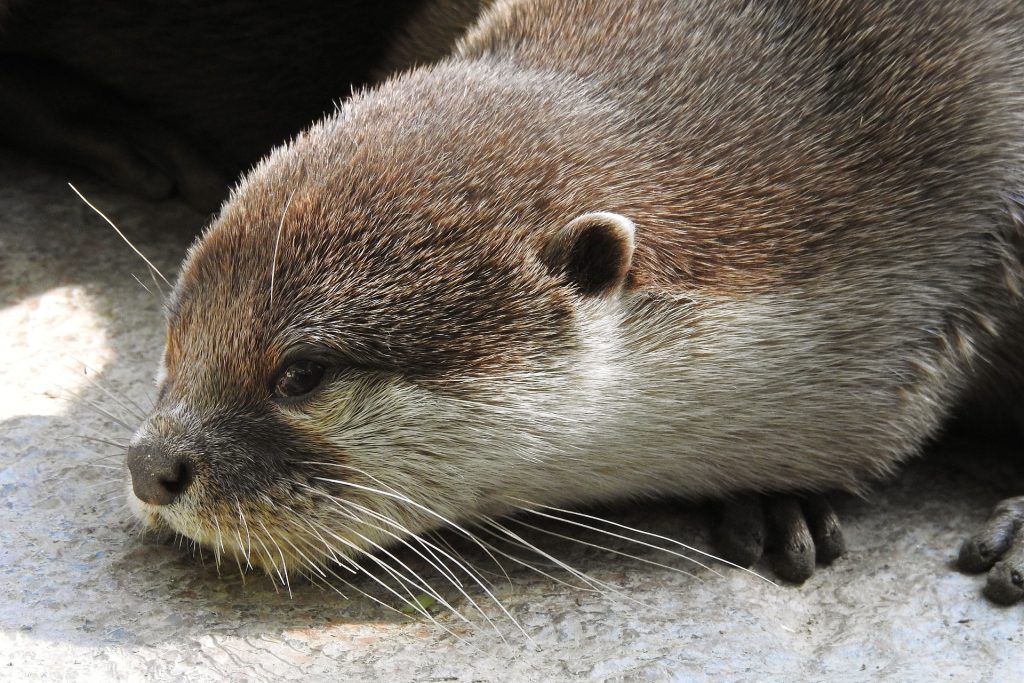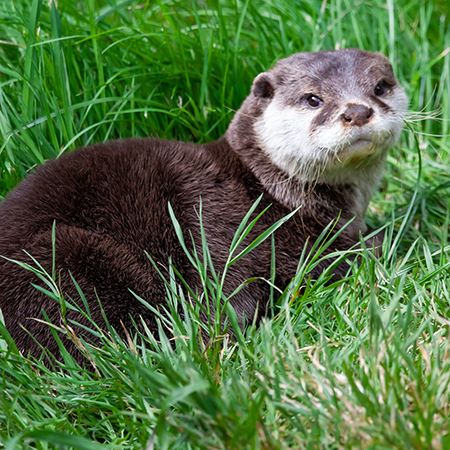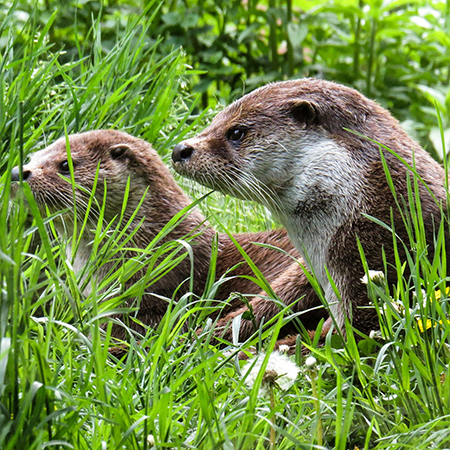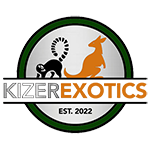General Information
Asian small-clawed otters can be found in the Southern parts of China and India, Indonesia, Philippines and Southeast Asia. They live in rivers, rice paddies, mangroves, small streams and on the seacoasts.
Size
The Asian Small Clawed Otter are the smallest of the species. There are 13 different species of otters They can weigh up to 10 pounds and range in a length of up to 2 feet long.
Appearance
They have darker fur on their backs and lighter fur on their bellies. They can have white, grey or cream colored markings on their throats and face.
Lifespan
They can live up to 12 years in captivity but in the wild lifespan is unknown.
Habitat
This otter prefers brackish or freshwater environments. They love the water but
also enjoy a significant amount of time out of the water and can travel considerable distance going to other waterways.
Diet
The Asian small claws diet consists of snails, crabs, frogs, insects, fish, rodents, snakes, worms, bird eggs and small aquatic animals.
Reproduction
They reach sexual maturity at approximately 12 to 18 months. However, the most successful breeding occurs at about 1/5 to 3 years of age. Gestation is about 68-82 days and litters can range from 1-6 pups. Females can produce 2 litters per year. Pairs mate for life and both parents help to raise the pups.
Other facts
The Asian Small Claw are very social and live in family groups of 15-20 otters.
They are very strong and agile swimmers, this is helpful when needing to get away from danger. Their nostrils close as well as their ears to aid them in swimming underwater. They have semi-webbed toes and their fur has air pockets that help them to stay warm while in the water.




Basic Care
Feeding
A diet composed of a variety of protein sources such as tilapia, catfish, salmon, crustaceans and other protein sources is required. We also recommend a cat food with urinary tract protection. A healthy otter needs about 350 grams of food per day or up to 20% of its own body weight. However, the age, sex, pregnancy, lactation and the temperature all effect the amount of food needed by the otter.
As a baby you will need to order formula, Day One 30/50 from this site.
https://store.foxvalleynutrition.com/day-one-3050
Water
Also provide fresh water, keep it away from their swimming water. The bowl should be disinfected every day and shaped so that your otter cannot flip it over
Cleanliness
Clean the enclosure daily.
Enclosure
The area should large, stimulating with several hiding places to accommodate you otters.
Temperature
They prefer temps of 75-85 degrees F but can tolerate temps down to 52 degrees F. Their pool water temperature should be at 75-85 degrees F.
Exercise
The otter will get exercise by running, jumping and playing, swimming, climbing, etc..
Handling
Joeys need to be allowed to have uninterrupted sleep between their feedings. Frequent handling or noise ca stress them out and result in injury, serious illness and even death.
Toileting
They are messy and like to smear their feces with their hind legs and tail, They also scent mark with their urine. So daily cleaning of the enclosure is essential.
Enrichment
Otters love to play, they are very social. They are tactile and love playing with items that they can roam around in. We like to give them live fish, that get so excited. They also enjoy finding rocks, marbles, balls and any other objects that they can move around and take in the water with them. These are very inquisitive and agile animals. It is important to socialize them with both other otters, animals and humans.
They require specialized care and knowledge of this animal.
Requirements
In addition to the requirements listed above you will need to have an enclosure that for 1-2 otters that is 10 ft x 10 ft and 6 ft high. It must include devices that provide physical and mental stimulation that is compatible to your otter. Every device must be non-injurious. Examples are boxes, balls, pvc tubing, etc. Each enclosure must also have a shelter, den and nest boxes that can accommodate all the animals in the enclosure. For each additional animal you must increase the enclosure size by 25% of the original floor space
